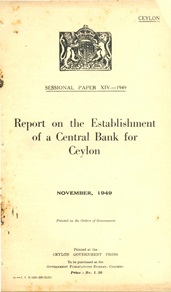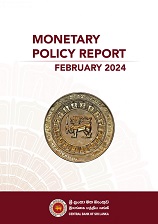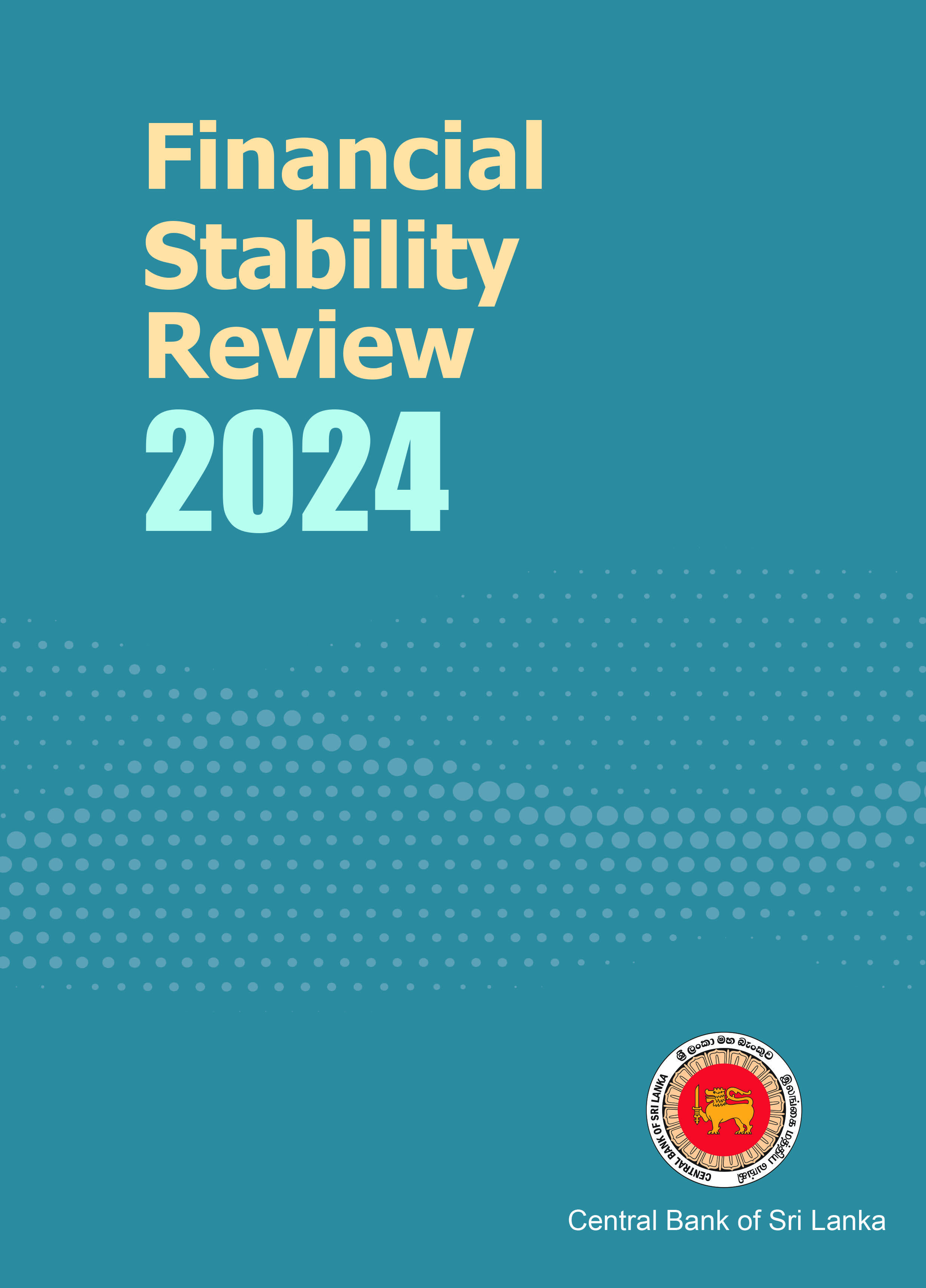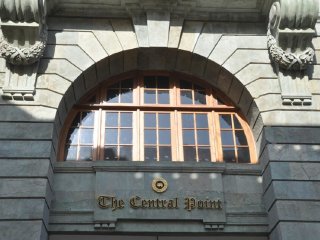Frequently Asked Questions (FAQs)
Currency
Who has the authority to issue currency notes and coins in Sri Lanka?
The Central Bank of Sri Lanka (CBSL) has the sole authority to issue currency notes and coins in Sri Lanka under section 44 of the Central Bank of Sri Lanka Act, No. 16 of 2023.
What denominations of currency notes and coins are in circulation today?
The denominations of currency notes in circulation today are Rs. 5000/=, 2000/=, 1000/=, 500/=, 200/=, 100/=, 50/=, 20/=, 10/=, 5/=, 2/=, 1/= (At present Rs. 10/=, 5/=, 2/= and Re.1/= notes have been replaced with coins.) and coins in circulation are Rs. 20/=, 10/=, 5/=, 2/=, Re. 1/=, cents. =/50, =/25, =/10, =/05, =/02, =/01.
How are currency notes and coins issued in to circulation?
CBSL issues currency to the Licensed Commercial Banks on their request. Accordingly, CBSL issues currency notes and coins through LCBs for the transaction purposes of the economy.
What are the specifications of the latest currency notes/coins printed/minted and issued in circulation?
They are as follows:
Currency Notes
| Specification | Rs.20 | Rs.50 | Rs.100 | Rs.500 | Rs.1000 | Rs.5000 |
| Dimension(mm) |
128 * 67 | 133*67 | 138*67 | 143*67 | 148*67 | 153*67 |
| 1st Issue Year on Note |
2010 | 2010 | 2010 | 2010 | 2010 | 2010 |
| Predominant Colour | Maroon | Blue | Orange | Purple | Green | Gold |
| Obverse Side | View of Port of Colombo as seen now and history | New and Old Bridge in Manampitiya and Arch Bridge | Norochchole Coal Power Plant and Laxapana Waterfall | World Trade Center-Twin Towers, BOC Head Office and Lankathilake Viharaya | Ramboda Tunnel | Weheragala Dam and Canyon Dam |
| Reverse Side | Ves Netum Dancer and Geta Bera Drummer | Vadiga Patuna Dancer and Yakbera drummer | Bharathanatyam Dancer and Mridangam drummer | Thelme Netuma Dancer and Yak Bera drummer | Malpadaya Netuma Dancer and Daul Bera drummer | Nagaraksha and Guruluraksha Dancers |
Coins
| Specification | Re.1 | Rs.2 | Rs.5 | Rs.10 | Rs.20 |
| Diameter (mm) |
20.0 | 22.0 | 23.5 | 26.4 | 28 |
| Thickness (mm) |
1.75 | 1.75 | 1.8 | 1.8 | 2 |
| Shape & Edge | Round Intermitted Milled |
Round Notched |
Round Milled with reg. indentations |
Round Eleven lobed |
Round Seven lobed |
| Year on Coin | 2017 | 2017 | 2017 | 2017 | 2020 |
| Metal / Alloy | Stainless Steel | Stainless Steel | Stainless Steel | Stainless Steel | Nickel Plated Steel |
| Obverse Side | Armorial Ensign of Sri Lanka | Armorial Ensign of Sri Lanka | Armorial Ensign of Sri Lanka | Armorial Ensign of Sri Lanka | CBSL Head Office Building |
| Reverse Side | Value in Numerals, Country and Year | Value in Numerals, Country and Year | Value in Numerals, Country and Year | Value in Numerals, Country and Year | Value in Numerals, Country and Year |
** The above Rs. 20 coin is a circulation standard commemorative coin which was issued to mark the 70th Anniversary of the Central Bank of Sri Lanka. In addition, two more Rs. 20 circulation standard commemorative coins have been issued to mark the 150th Anniversary of the Medical Faculty of the University of Colombo and the 150th Anniversary of the Census of Population and Housing in Sri Lanka.
What is special in paper used for printing currency notes?
The paper for currency notes is made out of 100 percent cotton pulp, which gives a rough and firm texture. However, the Rs. 200 commemorative note (Year on Note: 1998) is made of Polymer.
Who prints currency notes and mints coins for Sri Lanka?
Currency notes are printed at the De La Rue Lanka Currency & Security Print (Pvt) Ltd, Biyagama, Sri Lanka.
The latest coin series issued for circulation in 2017 have been minted by the Mincovna Kremnica, Slovakia and Rs.20 coin in 2020 has been minted by the China Banknote Printing and Minting Corporation.
The supplier(s) for Minting and Supplying of circulation coins for the Central Bank of Sri Lanka is selected through an international tender process.
What is counterfeit currency?
Currency notes and coins issued into circulation by any person or establishment other than the CBSL are considered as counterfeit currency.
For more details please visit: https://www.cbsl.gov.lk/en/notes-coins/damaged-notes-and-counterfeits/counterfeit-prevention
How do you distinguish between a counterfeit note and a genuine currency note?
All the currency notes issued by the CBSL have high security features designed to combat counterfeiting. The main security features that can be observed in a currency note are:
| Tactile (Feel) Features | Visual Features - Seen to the naked eye | Visual Features - By using specific equipment |
| Paper / Raw Material | Colours | Micro Lettering |
| Intaglio printing | Watermark | Micro Fibers |
| Tactile bars | Cornerstone Watermark | Fluorescent Feature |
| Security Thread | ||
| See Through Feature | ||
| Multi-Layer Latent Image |
Look for the features can be seen from the naked eye and micro features and other special features by using specific equipment. Always check several security features. Do not rely on one feature. If you have any doubt, compare the suspected note with what you know for certain that is genuine.
What should I do, if I have received a counterfeit currency note?
Counterfeit currency notes should not be used as means of payment. The use of counterfeit notes deliberately for transactions is a serious crime that is punishable by imprisonment and/or payment of a fine. Even the possession of a counterfeit note is an offence. If a person detects a counterfeit note, he/she should refuse to accept it. A person, who has already accepted such a note, should try to remember how he/she might have obtained it and immediately inform the Currency Counterfeit Bureau of Criminal Investigation Department (CID) of the Sri Lanka Police; Hotline : 0112422176 or 0112326670 and act on their advice or inform the nearest Police Station.
What is an unfit note?
A genuine currency note that has become worn out, badly soiled, disfigured with writing, sustained minor damage while in circulation or willfully mutilated, altered or defaced, can be considered as unfit note.
There are three kinds of unfit notes: -
Unserviceable notes, Damaged/Mutilated Notes and Willfully Mutilated, Altered or Defaced notes.
“Unserviceable Note”
Currency notes that have become dirty, worn out/badly soiled while in circulation but not mutilated.
“Damaged/Mutilated Note”
Currency note which has been reduced in its original size due to wear and tear, damaged, defaced, burnt, decomposed, shredded, torn, and where security features, date on note, serial number and signature are tampered with, by accident or by various natural disasters is categorized as a damaged/mutilated note.
"Willfully Mutilated, Altered or Defaced Notes"
Currency notes defaced with drawings, words, numbers, signs or symbols where the serial number, date, signature, value, or security feature of the currency note has been altered in any significant way.
Can I exchange unserviceable currency notes through LCBs?
Yes. Unserviceable currency can be exchange through LCBs.
Can I exchange damaged currency notes through LCBs?
Yes. The acceptance of damage currency notes, depend on the internal policies and procedures at LCBs. LCBs may accept damage currency notes for redemption and submit these notes to the CBSL for examination/determination of their redemption values.
Can I redeem willfully mutilated currency notes through LCBs?
No. These notes can be exchanged only through the damage note exchange counters of CBSL Head Office.
Use following link to download the application for redeem willfully mutilated/defaced or altered currency notes:
https://www.cbsl.gov.lk/sites/default/files/cbslweb_documents/notes_coins/Declaration_Willfully_Mutilated_Currency_E.pdf
Can LCB’s reject the acceptance of currency coins?
No. They should accept any amount of coins.
What do I do, if I receive a damaged/mutilated currency note?
Such currency note (burnt, decomposed, portions missing’ shredded or disfigured etc.) can be redeemed at the CBSL. In this case, follow the following guidelines for the preparation of damaged currency notes;
| No. | Nature of the damage | Preparation required |
| 1. | Torn but not fully separated | Join tears with transparent adhesive tape on both sides of the currency note. |
| 2. | Torn into separate parts but all parts are available | Join separated parts with transparent adhesive tape on both sides of the currency note. Position each part in a manner that approximates original appearance of the note. |
| 3. | Missing corners or portions of small area or small holes | Pasting of paper is not required |
| 4. | Missing a portion of substantial area | Paste a blank white paper that approximate the size of missing area at the reverse side of the mutilated note using transparent adhesive tape or an adhesive. Ensure pasted mutilated note replicates the standard dimensions of the particular denomination of currency note. |
Follow the relevant procedure for the particular currency note and sent by Registered Post to the CBSL at the following address for assessment and possible redemption.
Superintendent of Currency
Department of Currency,
Central Bank of Sri Lanka,
Janadhipathi Mawatha,
Colombo 1.
For more details please visit:
https://www.cbsl.gov.lk/en/notes-coins/damaged-notes-and-counterfeits/exchanging-damaged-notes
In addition, you can personally submit the unserviceable or damaged/mutilated currency notes to the CBSL Head office damage note exchange counter section between 9.00 a.m. – 12.00 noon on Wednesdays (Except Public and Bank holidays).
Counter Section,
Level 4, 5th Tower,
Head office Building,
Central Bank of Sri Lanka,
Janadhipathi Mawatha, Colombo 1.
Are damaged/mutilated currency notes worth the full face value?
If the damaged/mutilated currency note consists of more than ¾ with a complete serial number with the serial prefix, the note is worth its full value. If the note is more than ½ but less than ¾ with a complete serial number, it is worth half its value. However, determining the value of the currency note is at the discretion of the officer authorizing payment at Central Bank.
What does the CBSL do with unserviceable or damaged/mutilated and mutilated currency notes?
The CBSL withdraws the unserviceable or damaged/mutilated currency notes from circulation and destroy them with shredding machines.
Are there any regulations related to willful mutilation, alteration or defacement of currency notes?
Yes. In terms of Section no.55 of the Central Bank of Sri Lanka Act, No. 16 of 2023, any person, who without the authority of the Governing Board of the CBSL,
- Cuts, perforates, or in other way whatsoever mutilates any currency notes;
- Prints, stamps, or draws anything upon any currency note, or affixes any seal or stamp to upon any currency notes;
- Attaches or affixes to or upon any currency note anything in the nature or form of an advertisement;
shall be guilty of an offence.
Can I use coins for making jewellery or any other items?
No. In terms of the Central Bank of Sri Lanka Act, No. 16 of 2023 it is an offence to melt, break up, perforate, mutilate, or use otherwise than as legal tender, any coin which is legal tender in Sri Lanka.
Can I reproduce a currency note?
No. According to 55(d) of the Central Bank of Sri Lanka Act, No. 16 of 2023 reproduction of a currency note in any form such as photocopying, scanning, drawing etc, without the authority of the Governing Board, is an offence.
Who decides and what are the factors considered in designing a currency note?
The design, production and issue of currency notes are the responsibility of CBSL. In deciding on the designs, the CBSL may consult the Government of Sri Lanka and also get suggestions from the general public. The Governing Board shall, with the approval of the Minister in charge of the subject of Finance, prescribe the denominations, dimensions, designs, inscriptions, and other characteristics of currency notes issued by the Central Bank.
From where can I buy old currency notes and coins or any other commemorative currencies?
Depending on the availability, few currency notes and coins or any other commemorative currencies can be purchased from all of our CBSL Regional Offices and Economic History Museum (EHM) at the Central Point Building, No 54, Chatham Street, Colombo 01.
Can I do online purchases from the Central Bank EHM or any Regional Offices?
Currently online purchasing facility is temporary not available. Therefore, you need to physically present at EHM or any Regional Offices.
From where can I obtain historical information on evolution of Sri Lanka currency?
The historical information of currency can be collected from the following museums and the publications.
i) The CBSL has established three museums at following places, where the historical information are available for the public
| Economic History Museum, Central Point Building, 54, Chatham Street, Colombo 01. Contact No : +94 11 2444503 Email : currency@cbsl.lk |
Money Museum, Regional Office, Central Bank of Sri Lanka, Stage I, Anuradhapura. |
Money Museum, Regional Office, P.O. Box 35, Anagarika Dharmapala Mawatha, Matara |
In addition to the above anybody can gather information from:
http://www.museum.gov.lk/web/index.php?option=com_regionalm&task=regionalmuseum&id=6&lang=en
National Museum,
Department of National Museum
Sir Marcus Fernando Mawatha
Colombo 7
ii) The following Publications of the CBSL will also help.
- "Sri Lanka Currency in Recent Times" - By Mr. T.M.U. Salley.
- "History of Coins and Currency in Sri Lanka" - By Mr. H.S.de Silva
- “Hora Nottu Handuna Ganimu” in Sinhala Language (Detection of Counterfeit Notes) - By Mr. Yasapala Perera (This publication is available for sale at Communications Department of the CBSL)
- “Mudale Ithihasaya saha Sri Lanka Samaru Kasi” in Sinhala Language (History of coins and currency and commemorative Coins of Sri Lanka) - This publication is available at currency museums of the CBSL.
- Other brochures and leaflets are available at the currency museums of the CBSL
- “The 70 Year Journey of Currency Issue and Management” in English Language – By Ms. Shellomi H Gunawardena and Mr. W M K Weerakoon
- "Puranayen Rupiyalata” – By CBSL Publication
Opening hours of the Currency Museum?
The Currency Museum is open to the public from 9.00 a.m to 4.15 p.m. on weekdays except for public and bank holidays.










